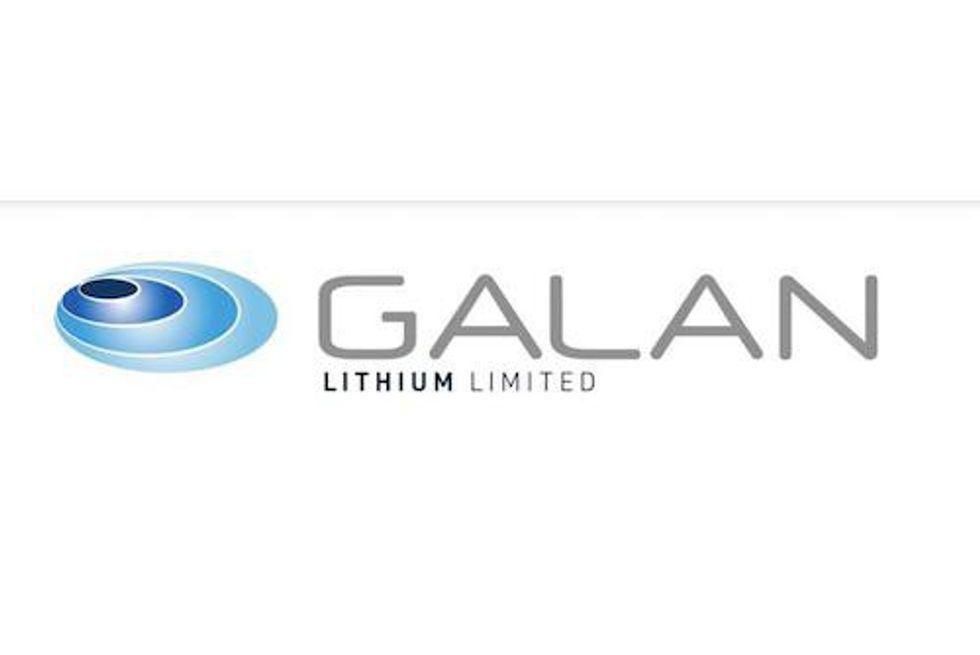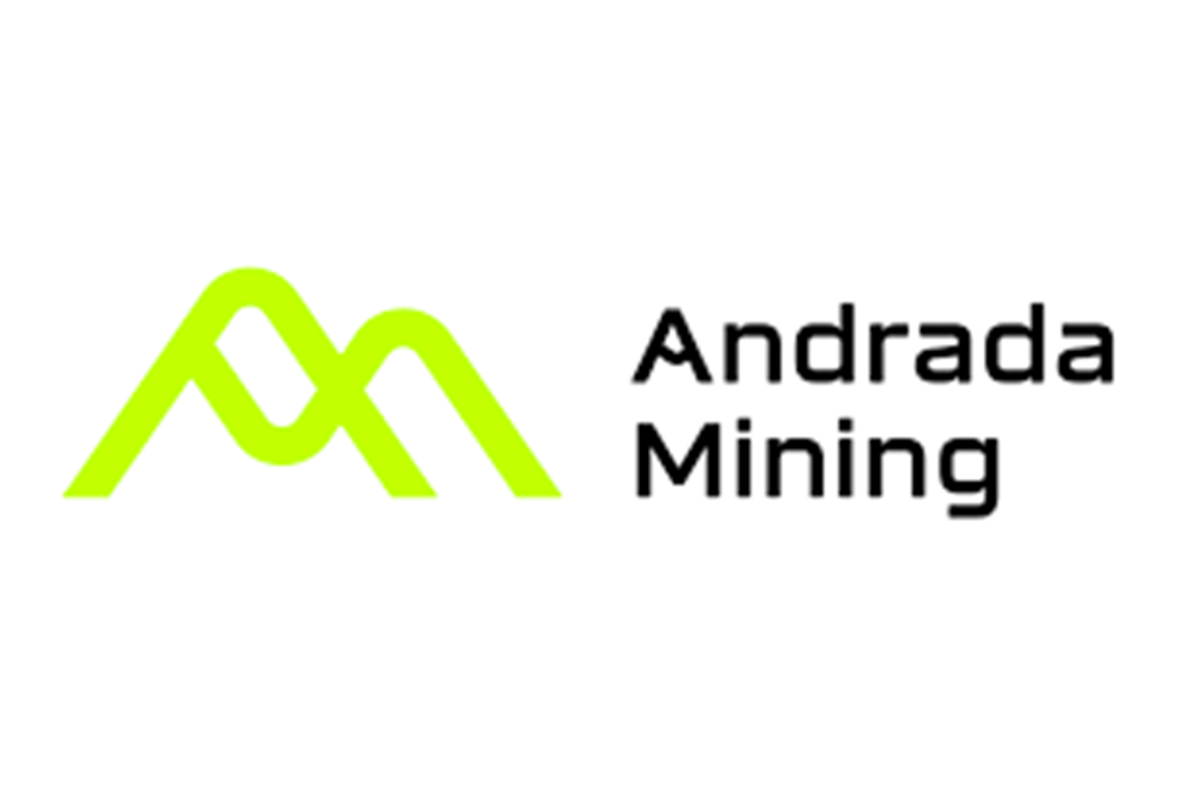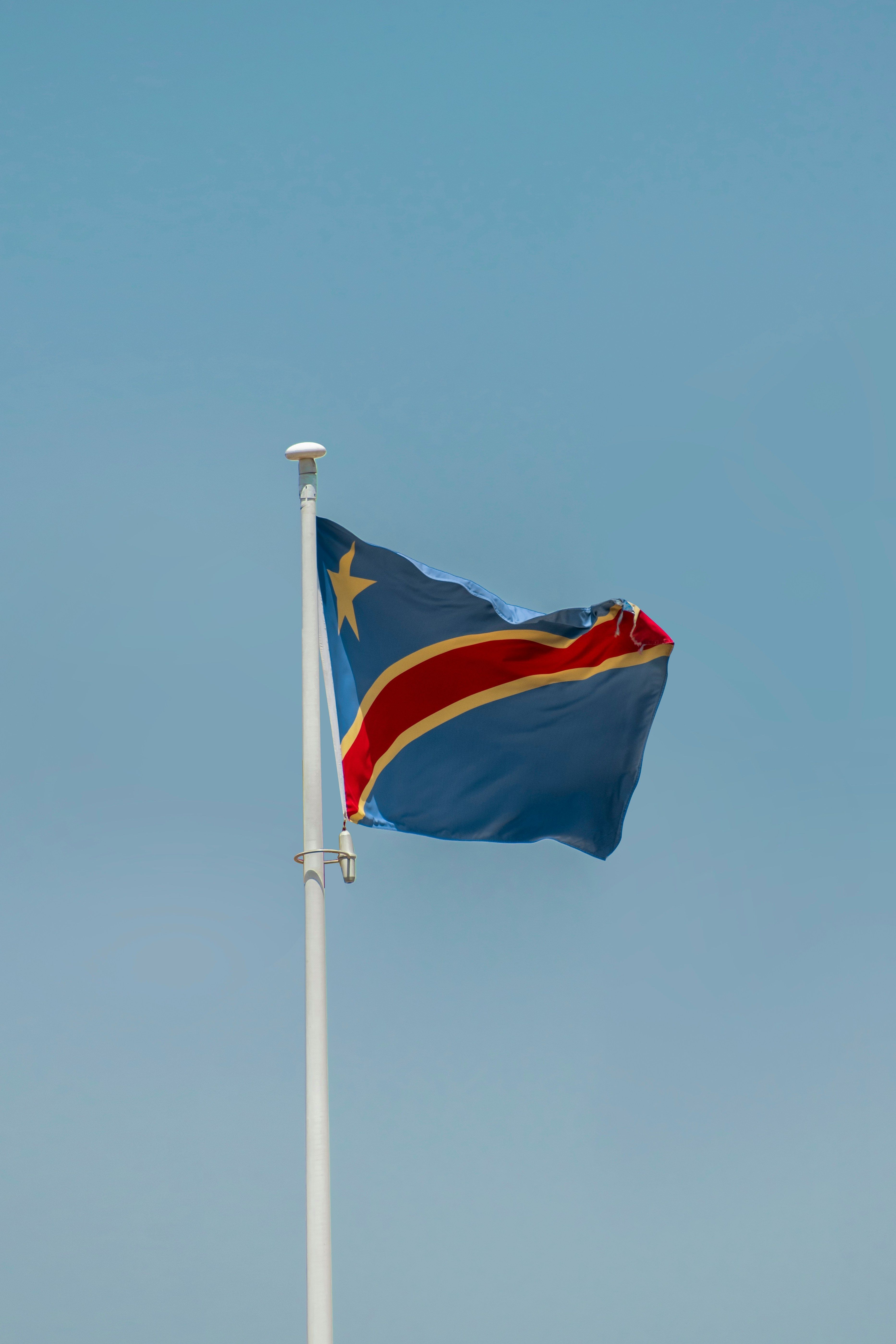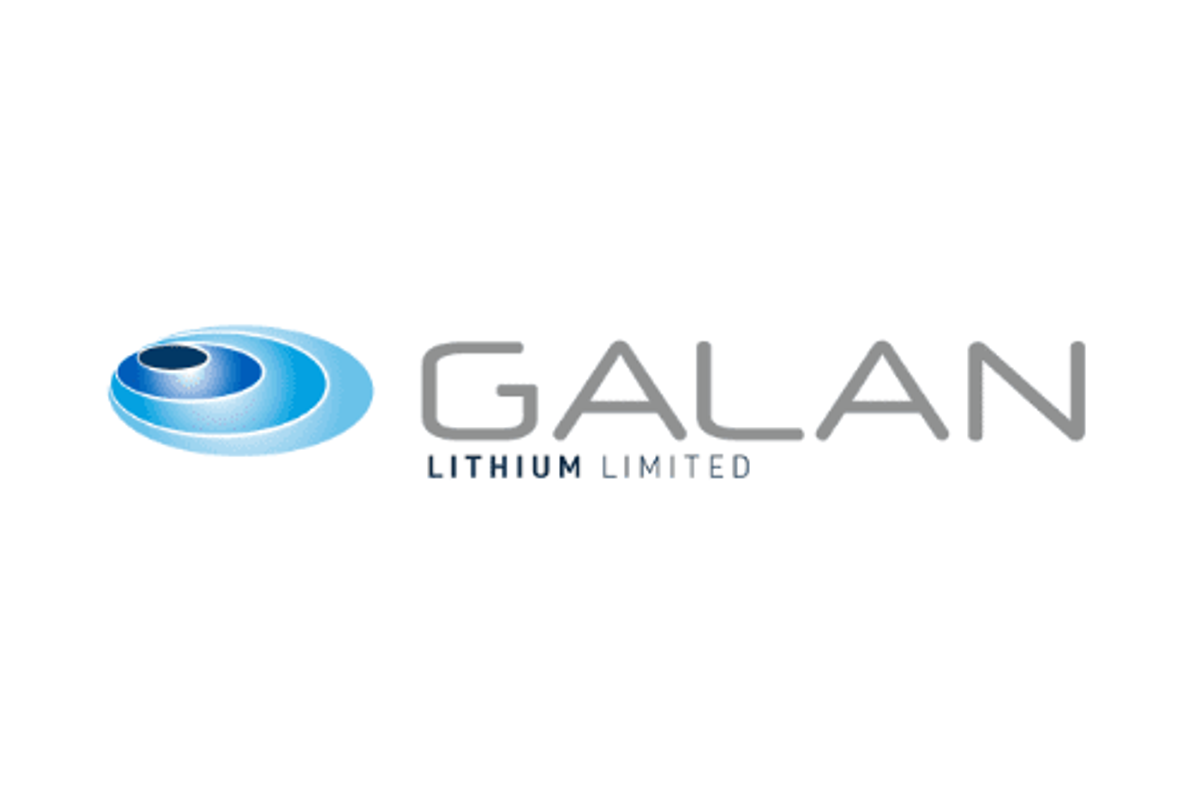
- NORTH AMERICA EDITIONAustraliaNorth AmericaWorld
April 15, 2021
Highlights:
- CSIRO’s historical datasets show prospectivity for Galan’s Greenbushes South Lithium Project
- Historical laterite geochemistry data collected prior to mining at Greenbushes
- Elevated abundances of pathfinder elements display a well-defined anomaly adjacent to Greenbushes South
- Dispersion of elements into the laterite profiles include arsenic, tantalum, tin and antimony among others
- Galan to commence sampling and mapping at Greenbushes South next month
Galan Lithium Limited (ASX: GLN) (Galan or the Company) is pleased to announce that it has completed a review of historical CSIRO data which enhances the prospectivity of its Greenbushes South Lithium project.
Galan reviewed the historical CSIRO data sets of laterite geochemistry (Smith et al. 1987 (*)) along with other geological studies. This CSIRO study defines geochemical anomalies within the laterite soils across the Greenbushes region due to the dispersion minerals and elements during extensive weathering of the mineralized Li-Sn-Ta pegmatites. This study was undertaken before Talison Lithium Pty Ltd’s mine commenced production, when the ore deposit was still concealed. This study confirmed the feasibility to explore for a concealed deposit of this style of mineralisation. Elements such as As, Sn, Be, Sb, Nb, Ta and B were used to define the anomaly and were centred over the deposit. This review was conducted by Galan’s Competent Person, Dr Luke Milan.
Galan will now augment this data set by extending the coverage of soil sampling on from the historical data sets, with a focus on the most anomalous area located to the north east of Greenbushes South holding. Mapping and rock chip sampling will also be undertaken. The objective is to confirm historical data and define extensions of geochemical anomalies and therefore potential mineralisation into Galan’s Greenbushes South tenure. These results would then be used to delineate potential targets for further exploration such as drilling.
Dr Milan said: ‘Historical geochemical assays of pisolitic laterites surrounding the Greenbushes deposit indicate well defined multi element dispersion from the source of the outcropping mineralised pegmatites. By plotting pathfinder elements such as As, Sn, Sb and Ta, the general trend and extent of the anomaly surrounding the deposit can be seen in the figures below. Additional soil sampling within the current holdings is planned to augment the current data set to delineate any potential along strike extension of the Greenbushes deposit to the south
The Greenbushes South Lithium Project (‘the Project’) is located 200 km south of Perth, the capital of Western Australia. With an area of 353 km2 , the Project was originally acquired by Lithium Australia NL due to its proximity to the Greenbushes Lithium Mine (‘Greenbushes’), given that the Project covers the southern strike projection of the geological structure that hosts Greenbushes. The Project area commences approximately 3km south of the Greenbushes open pit mining operations.
Greenbushes is currently the largest hard-rock lithium mine in the world, operated since May 2014 by Talison Lithium Pty Ltd, an incorporated joint venture between Tianqi Lithium Corporation (51%) and Albemarle Corporation (49%). Greenbushes produces a concentrate of the lithium mineral, spodumene, to feed both China and Western Australian based mineral conversion plants or consumers of spodumene concentrates in Europe, North America and China. Australian mining company IGO Limited recently signed a deal to acquire a 24.99% stake in Greenbushes from Tianqi Lithium Corporation.
Reports of work by earlier explorers within the Project record the presence of pegmatites – a rock type that may host spodumene – and so provides immediate exploration targets. Much of this earlier work focused on the discovery of the minerals cassiterite (tin) and tantalite (tantalum), as Greenbushes was at different times mined for these minerals before spodumene (lithium) became the major driver of revenue.
The Greenbushes South project area is deemed to have had a low level of exploration maturity, with no available drilling results for lithium or lithium pathfinders. Numerous MINDEX occurrences of lithium, beryl, tin feldspar tourmaline and mica are found in the project area, potentially indicating lithium-Caesium-Tantalum mineralisation associated with pegmatites. Critically, the project area due south of the Greenbushes mine is highly prospective due to potential for along strike extensions south into the project area. This project area is host to a large strike length of the Donnybrook – Bridgetown Shear Zone hosting the Greenbushes mine deposit.
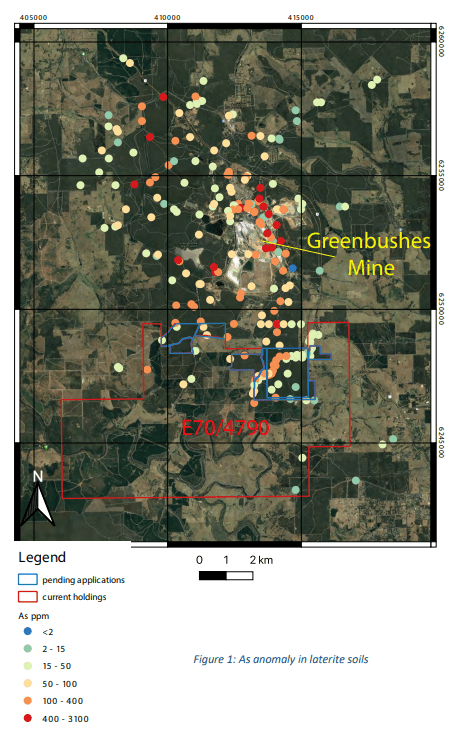
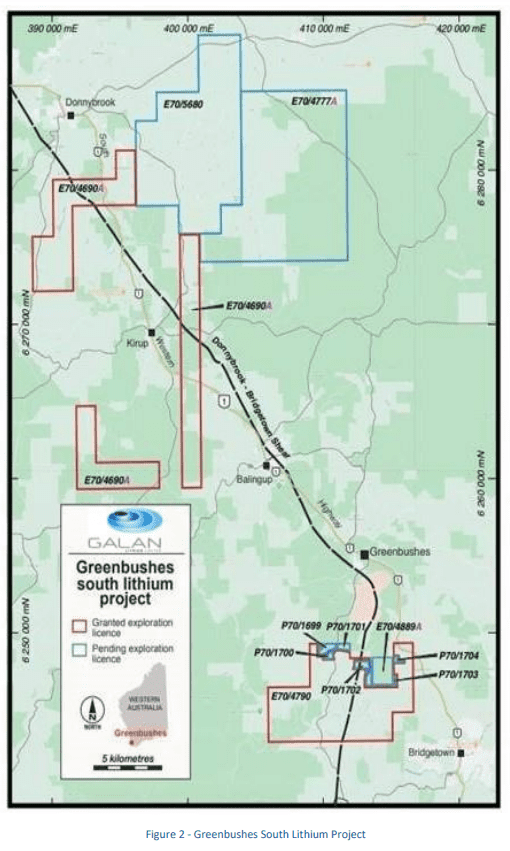

The Galan Board has authorised this release.
For further information contact:
Juan Pablo (“JP”) Vargas de la Vega
Managing Director
Email: jp@galanlithium.com.au
Tel: +61 8 9322 6283
Terry Gardiner
Non-Executive Director
Email: TGardiner@galanlithium.com.au
Tel: + 61 400900377
About Galan
Galan is an ASX listed company exploring for lithium brines within South America’s Lithium Triangle on the Hombre Muerto salar in Argentina. Hombre Muerto is proven to host the highest grade and lowest impurity levels within Argentina and is home to Livent Corporation’s El Fenix operation and Galaxy Resources and POSCO’s Sal de Vida projects.
Galan has three projects:
Candelas: a ~15km long by 3-5km wide valley filled channel which project geophysics and drilling have indicated the potential to host a substantial volume of brine and over which a maiden resource estimated 685kt LCE (Oct 2019). Furthermore, Candelas has the potential to provide a substantial amount of processing water by treating its low-grade brines with reverse osmosis, this is without using surface river water from Los Patos River.
Hombre Muerto West (HMW): a ~14km by 1-5km region on the west coast of Hombre Muerto salar neighbouring Livent Corp to the east. HMW is currently comprised of seven concessions – Pata Pila, Rana de Sal, Deceo III, Del Condor, Pucara, Catalina and Santa Barbara. Geophysics and drilling at HMW demonstrated a significant potential of a deep basin. In March 2020, a maiden resource estimate delivered 1.1Mt of LCE for two of the largest concessions (Pata Pila and Rana de Sal). That resource now sits at 2.3Mt of LCE with exploration upside remaining for the rest of the HMW concessions not included in the current indicated resource.
Greenbushes South Lithium Project: Galan has an Exploration Licence application (E70/4629) covering a total area of approximately 43 km2. It is approximately 15kms to the south of the Greenbushes mine. In January 2021, Galan entered into a sale and joint venture with Lithium Australia NL for an 80% interest in the Greenbushes South Lithium project, which is located 200 km south of Perth, the capital of Western Australia. With an area of 353 km2, the project was originally acquired by Lithium Australia NL due to its proximity to the Greenbushes Lithium Mine (‘Greenbushes’), given that the project covers the southern strike projection of the geological structure that hosts Greenbushes. The project area commences about 3km south of the current Greenbushes open pit mining operations.
Competent Persons Statement
The information contained herein that relates to exploration results and geology is based on information compiled or reviewed by Dr Luke Milan, who has consulted to the Company. Dr Milan is a Member of the Australasian Institute of Mining and Metallurgy and has sufficient experience which is relevant to the style of mineralisation and types of deposit under consideration and to the activity which they are undertaking to qualify as a Competent Persons as defined in the 2012 Edition of the ‘Australasian Code for Reporting of Exploration Results, Mineral Resources and Ore Reserves’. Dr Milan consents to the inclusion of his name in the matters based on the information in the form and context in which it appears.
The Conversation (0)
20 April
Galan Lithium
Investor Insight
Galan Lithium’s investment appeal is driven by its Hombre Muerto West project, a top 20 global lithium resource featuring high-grade, low-cost lithium brine concentrate, on track for near-term production in Argentina’s renowned mining region.
Overview
Argentina is no stranger to lithium mining. The South American nation is one of three encompassed in the prolific Lithium Triangle, a region that holds more than 60 percent of the world’s lithium resources. Argentina has the world’s second greatest endowment of lithium reserves (17 Mt), concentrating lithium operations in the provinces of Jujuy, Salta and Catamarca.
Demand for lithium is forecasted to grow from approximately 1 Mt LCE in 2024 to around 3Mt in 2030, a compound annual growth rate of around 20 percent. Argentina has committed to $7 billion worth of investment for lithium production with strong growth projected for exports at $1.1 billion in 2023.
Galan Lithium (ASX:GLN,FSX:9CH) is an Australia-based international mining development company focused on its high-quality lithium brine projects in Argentina – Hombre Muerto West and Candelas. The company also holds a highly prospective lithium project in Australia – Greenbushes South.
Get access to more exclusive Lithium Investing Stock profiles here
Keep reading...Show less
Developing high-grade lithium brine projects in Argentina
10 September
CATL Mine Restart Pressures Australian Lithium Market
Australia’s lithium sector is facing pressure on the back of news that Chinese battery giant Contemporary Amperex Technology (CATL) (SZSE:300750,HKEX:3750) is expected to resume production at its Jianxiawo mine.
Operations were halted in August when the mine’s licence expired, with the suspension expected to last three months.
Located in Yichun, Jiangxi province, Jianxiawo produces about 65,000 tonnes of lithium carbonate equivalent annually, roughly 6 to 8 percent of global supply. It is the largest mine in Yichun, often referred to as China’s “lithium capital.”
The restart is expected to tighten competition for Australian producers, which had briefly benefited from the closure and from renewed interest in non-Chinese supply following tariffs announced by US President Donald Trump.
ASX lithium stocks take a hit
ASX lithium stocks saw share price declines after news of the CATL restart hit, with Liontown Resources (ASX:LTR) falling nearly 17 percent and losing more than half of what it gained after the mine was suspended.
Even mining giants BHP (ASX:BHP,NYSE:BHP,LSE:BHP) and Rio Tinto (ASX:RIO,NYSE:RIO,LSE:RIO) succumbed to the situation, with both seeing 1.7 percent drops on Wednesday (September 10).
Pilbara Minerals (ASX:PLS,OTC Pink:PILBF) saw a significant decrease as well, dropping 15 percent. MarketScreener states that this was the company’s worst daily performance since June 1, 2022.
Mineral Resources (ASX:MIN,OTC Pink:MALRF) also experienced a drop, falling 8 percent.
These miners have been making strategic moves toward addressing lithium demand.
Rio Tinto acquired Arcadium Lithium in March and is progressing its Rincon project in Argentina.
In August, Mineral Resourced entered into a joint venture with Livium (ASX:LIT) to commercialise the LieNA lithium-processing technology, which is designed to recover lithium from spodumene.
In its latest financial report, Pilbara Minerals underlined progress at its Colina project, which it secured through its acquisition of Latin Resources. As of 2025, Pilbara Minerals’ Pilgangoora mine has dethroned the Greenbushes mine in terms of resource size, at 446 million tonnes at 1.28 percent lithium oxide.
For its part, Liontown commenced commercial production at its Kathleen Valley plant in January. Kathleen Valley produced over 300,000 wet metric tonnes of spodumene concentrate during its first 11 months of operation.
Australia taking steps to support lithium
While the lithium sector remains susceptible to market changes, the Australian government has been making an effort to help mining companies move their projects forward.
Among these is the Battery Breakthrough Initiative, announced in the 2024/2025 federal budget. It seeks to provide AU$500 million in funding to promote the development of battery-manufacturing capabilities in Australia.
The Battery Breakthrough Initiative forms part of the Future Made in Australia agenda, and may provide funding through capital grants, production incentives and the like.
Western Australia has an incentive of its own called the Lithium Support Program, aiming to provide AU$150 million in lithium support via a loan facility for miners and the waiving of port charges and mining tenement fees.
A recent study from the Geological Survey of Western Australia, Curtin University and the University of Western Australia states that Western Australia supplies around 35 percent of the world's lithium, highlighting its potential.
The federal government also passed the Critical Minerals Production Tax Incentive in February to provide a 10 percent tax break on processing and refining costs for critical minerals, including lithium.
“The incentives are valued at AU$7 billion over the decade,” said Federal Resources Minister Madeleine King, calling the legislation a “historic moment” for the industry.
The incentive is applicable from 2028 to 2040, for up to 10 years per project.
There’s also the National Reconstruction Fund (NRF) and Critical Minerals Facility. The latter’s initial AU$2 billion amount has been doubled to AU$4 billion, plus new investments through the NRF.
Included in the NRF’s recent investments is AU$50 million to support Liontown’s Kathleen Valley.
Fastmarkets was optimistic about the lithium landscape in a February report, projecting that the surplus will shrink to 10,000 tonnes in 2025. After that, it anticipates a deficit of 1,500 tonnes in 2026.
“We’re expecting a rebalancing of market dynamics over the next few years,” a producer told the firm.
Don’t forget to follow us @INN_Australia for real-time news updates!
Securities Disclosure: I, Gabrielle de la Cruz, hold no direct investment interest in any company mentioned in this article.
Keep reading...Show less
09 September
International Lithium Corp.
Investor Insight
International Lithium offers investors exposure to the growing critical metals sector through its advanced-stage Raleigh Lake lithium-rubidium project in Ontario, early-stage copper-cobalt exploration at Firesteel in Ontario, and strategic focus on Southern Africa, all supported by strong infrastructure and a seasoned leadership team.
With strategic divestments, a robust financial position, and a focused growth strategy, International Lithium is well-positioned to meet the rising demand for lithium and other critical metals
Overview
International Lithium (TSXV:ILC,OTC:ILHMF,FRA:IAH,OTCQB:ILHMF) is a Canada-based mineral exploration company focused on the discovery and development of lithium and other critical metals essential for the transition to a cleaner, greener planet. With a portfolio of projects located in mining-friendly jurisdictions, the company’s primary objective is to build shareholder value by advancing its key assets towards production while expanding its presence in emerging critical metals regions.
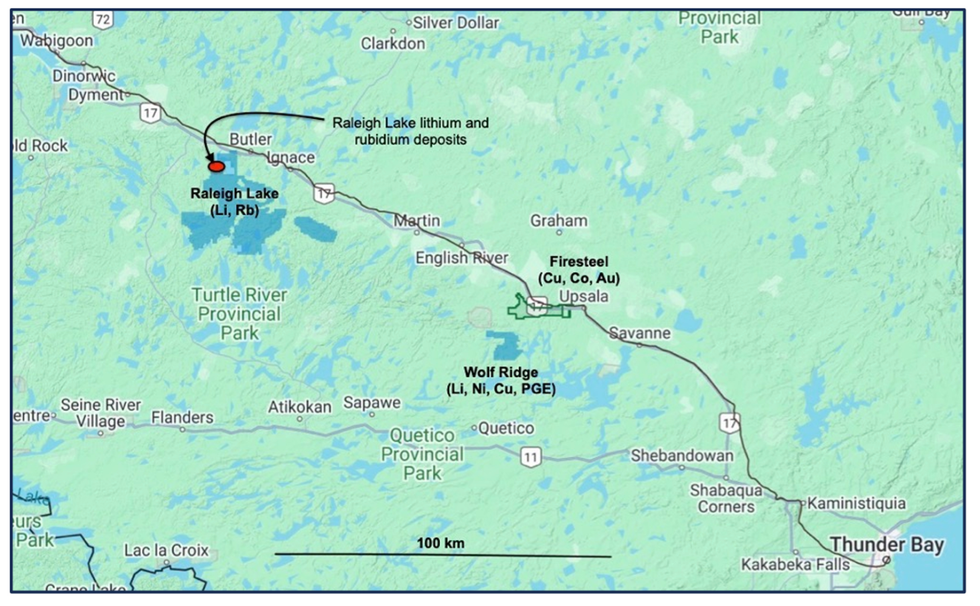
International Lithium's flagship asset is the 100 percent owned Raleigh Lake lithium and rubidium project in Ontario. A preliminary economic assessment (PEA) for the Raleigh Lake project, completed in December 2023, demonstrated strong project economics and significant resource growth potential, including an annual after-tax cash flow of C$634 million, NPV of C$342.9 million and IRR of 44.3 percent, with a nine-year mine life and project duration of 11 years. This assessment did not yet include rubidium, which represents significant additional potential pending further market analysis.
Complementing its lithium focus, the company is advancing the Firesteel copper-cobalt project in northwestern Ontario, targeting high-grade base metal mineralization to further diversify its critical metals exposure.
In addition to its Canadian projects, International Lithium is positioning for further international growth with a strategic focus on Southern Africa. It has applied for exclusive prospecting orders (EPOs) in Zimbabwe, one of the world's most prospective regions for hard rock lithium exploration.
Recent strategic divestments, including the sale of the Avalonia project stake, have strengthened ILC's financial position, enabling focused investment in its core projects.
In 2025, International Lithium acquired an option from Lepidico (Canada) Inc. to purchase 100 percent of Lepidico (Mauritius) for C$975,000. Lepidico Mauritius holds an 80 percent stake in Lepidico Chemicals Namibia (Pty) Ltd., which owns the Karibib Lithium, Rubidium and Cesium Project in Namibia.
The project comprises two areas with fully permitted mining licences, known as Rubicon and Helikon. It also hosts one of the largest disclosed rubidium resources in Africa, along with significant lithium and cesium mineralization.
Exercising the Karibib option would position International Lithium to capitalize on an upswing in the lithium market while also cementing its role as one of the leading global players in rubidium. The project would expand its portfolio of some of the most significant cesium resources held by any non-Chinese company, strengthening its standing in three critical minerals that are increasingly vital to global supply chains.
The company is led by an experienced management team with a strong technical background in mineral exploration, project development and corporate finance. Supported by access to established infrastructure, a commitment to sustainable development practices, and a clear strategic focus, International Lithium is well-positioned to capitalize on the increasing global demand for lithium and other essential materials critical to the clean energy transition.
Company Highlights
- International Lithium is focused on developing lithium and critical metals projects in Canada and Southern Africa, aiming to deliver shareholder value through project development, strategic partnerships and project sales.
- Raleigh Lake is ILC’s wholly owned flagship lithium-rubidium project in Ontario, Canada, with a positive PEA completed in December 2023.
- ILC holds a 90 percent interest in the Firesteel copper and cobalt project in Northwestern Ontario, with exploration permits filed and drilling programs planned.
- The company has applied for exclusive prospecting orders (EPOs) in Zimbabwe and is continuing to review further exploration opportunities in Southern Africa.
- ILC is debt-free with a robust financial position. It has monetized its non-core assets, including the sale of its stake in the Avalonia project in Ireland, resulting in a C$2.5 million payment and a 2 percent net smelter royalty.
- ILC secured an option to acquire 100 percent of Lepidico (Mauritius), which owns an 80 percent interest in Lepidico Chemicals Namibia, the owner of the Karibib Lithium, Rubidium and Cesium Project in Namibia.
- The company is led by an experienced management team with a proven track record in advancing mineral exploration projects.
Key Projects
Raleigh Lake
The Raleigh Lake project is ILC’s flagship asset, located approximately 25 kilometres west of Ignace, Ontario. The project covers a contiguous land package of 32,900 hectares and is 100 percent owned by the company. Raleigh Lake benefits from excellent infrastructure access, situated near the Trans-Canada Highway, a Canadian Pacific Railway line, and existing natural gas and hydroelectric infrastructure.
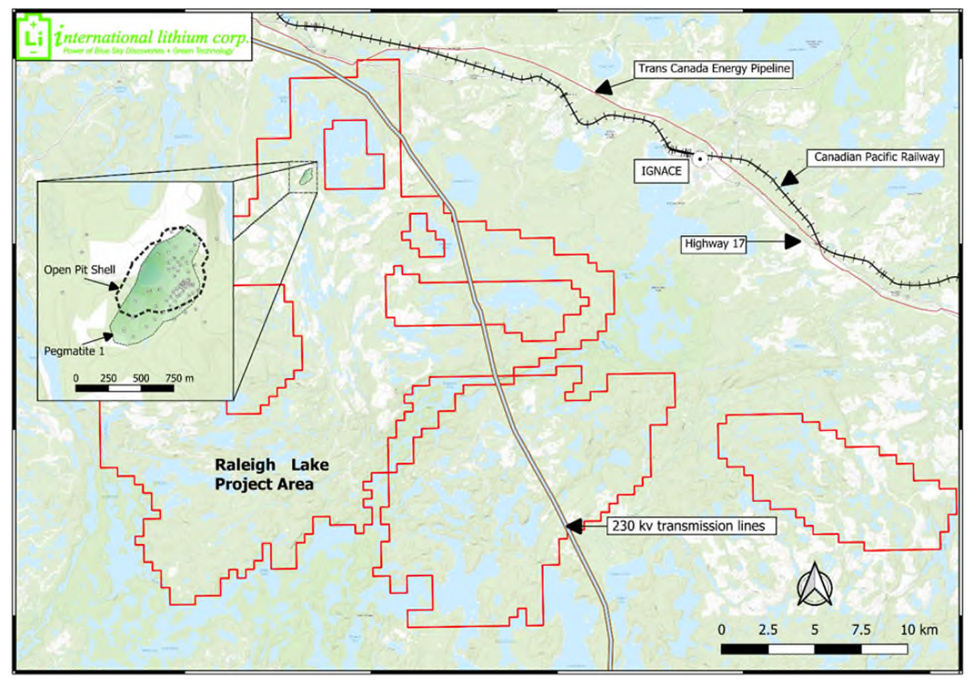
Major public infrastructure relative to the Raleigh Lake project
Raleigh Lake is notable for its dual potential to host both lithium and rubidium mineralization. The lithium is found primarily in spodumene-bearing pegmatites, while rubidium is associated with microcline-rich zones of the same lithium-cesium-tantalum pegmatite system. In 2023, International Lithium published a maiden mineral resource estimate (MRE) that delineated significant resources for both lithium and rubidium using separate cutoff criteria.
For lithium (Li₂O), the project hosts a measured and indicated resource of 5.88 Mt grading 0.79 percent Li₂O, and an inferred resource of 2.07 Mt grading 0.77 percent Li₂O, primarily within pegmatite #1. This lithium resource forms the basis of the company’s PEA, which demonstrated robust project economics with an after-tax NPV (8 percent) of C$342.9 million and an IRR of 44.3 percent.
The rubidium component, though not included in the PEA due to current market constraints, represents an additional potential value stream. The company has reported a measured and indicated resource of 133,000 tons at 6,163 ppm rubidium (0.67 percent Rb₂O) and an inferred resource of 123,000 tons at 4,224 ppm rubidium (0.46 percent Rb₂O), using a 4,000 ppm cutoff. The rubidium zones are found in association with potassic feldspar, offering a potentially recoverable byproduct pending further market and technical evaluation.
Given the project’s strong infrastructure position, mineral endowment, and defined development path, Raleigh Lake represents a compelling advanced-stage opportunity in North America's lithium supply chain. International Lithium is continuing infill and expansion drilling, environmental baseline studies, and metallurgical testing to support project advancement toward pre-feasibility.
Firesteel Project
The Firesteel project is an early-stage copper-cobalt exploration property located in northwestern Ontario, approximately 10 km west of Upsala along Highway 17. Spanning a 16-km corridor to the Firesteel River, the property lies within a geologically favorable region characterized by Archean metavolcanic and metasedimentary rocks, which are prospective for volcanogenic massive sulphide (VMS) and sedimentary copper systems.
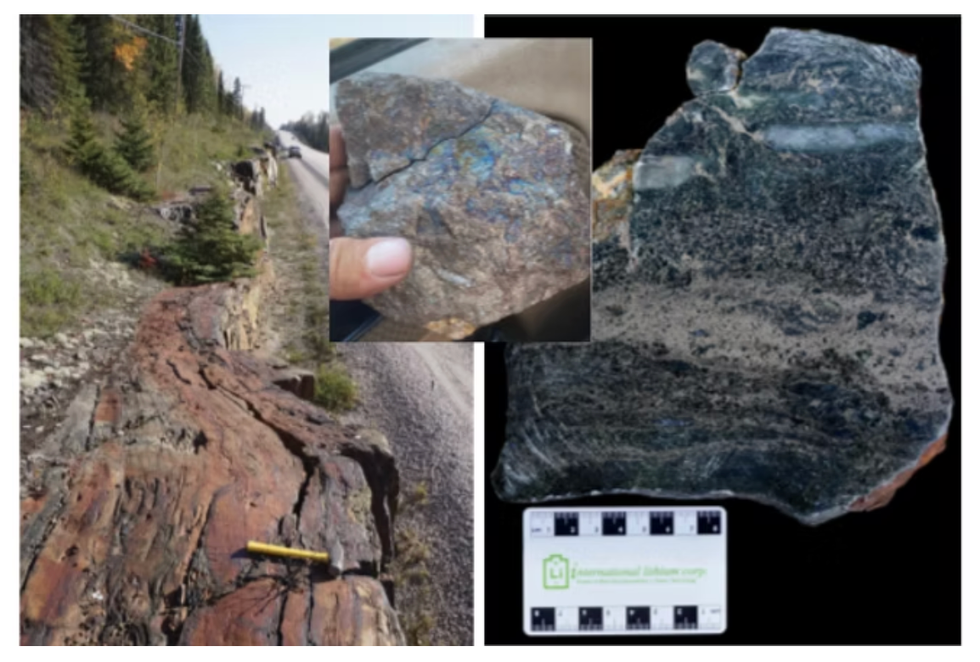
International Lithium completed the acquisition of a 90 percent interest in the Firesteel project in May 2024, aiming to diversify its critical metals portfolio beyond lithium. Historical sampling on the property has returned encouraging results, including copper assays up to 2.6 percent and cobalt values reaching 309 ppm. Notably, the "Roadside 1" occurrence features semi-massive sulphide mineralization comprising pyrite, pyrrhotite, chalcopyrite and bornite. These findings suggest the presence of a highly metamorphosed VMS or sedimentary copper system, potentially up to 20 meters wide and extending over a kilometer in length.
The project's proximity to major infrastructure, including highways and railways, coupled with its strategic location near the company's Raleigh Lake project, enhances its development potential. International Lithium plans to conduct systematic exploration, including geochemical sampling and geophysical surveys, to refine targets for future drilling campaigns.
Wolf Ridge Project
Wolf Ridge is a 5,700-hectare grassroots lithium project located 20 km southwest of Upsala and near ILC’s Firesteel copper claims. The area benefits from excellent infrastructure, including proximity to Highway 17, power, and road access.
The project was highlighted by the Ontario Geological Survey (2021–2022) for its standout lake sediment anomalies - among the highest lithium values in the region - indicating strong potential for LCT pegmatite mineralization.
Read more on page 54 of the report here.
Southern Africa Exploration Initiative
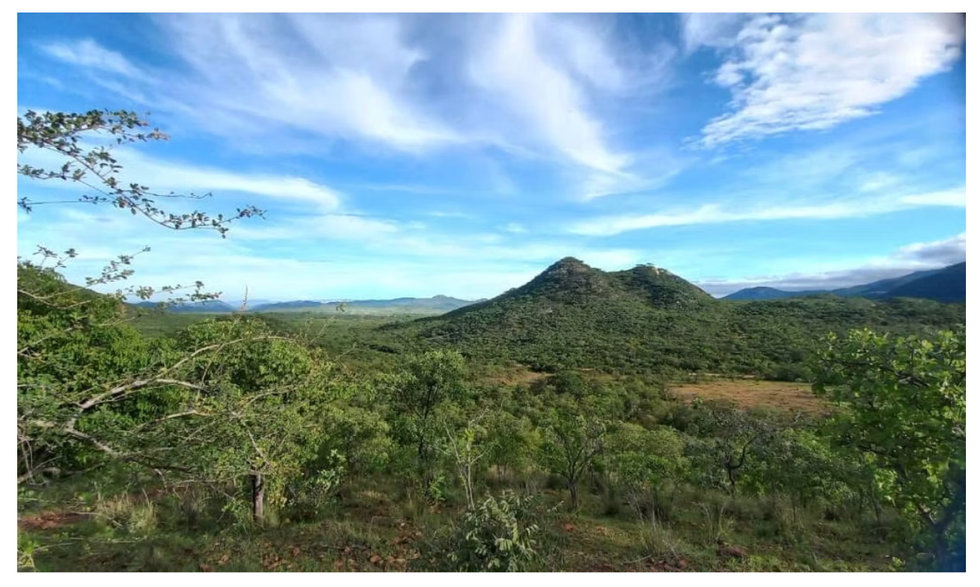
Southern Africa is recognized as a prospective region for hard rock lithium, and International Lithium’s strategic focus reflects a proactive move to establish a presence in this emerging jurisdiction.
As part of its strategy to expand its critical metals footprint, International Lithium has applied for Exclusive Prospecting Orders (EPOs) over several prospective areas in Zimbabwe. The targeted regions are known for hosting spodumene, lepidolite and petalite-bearing pegmatites, indicating potential for significant lithium resources.
Although the EPO applications are still pending approval, the company has already conducted initial due diligence, including geological reviews and desktop studies, to prioritize exploration targets once access is granted. Zimbabwe’s growing importance as a global lithium supplier, combined with favorable mining policies, offers a compelling backdrop for the company's expansion efforts. International Lithium intends to leverage its technical expertise and exploration experience to quickly evaluate and develop these opportunities upon receiving the necessary permits
Management Team
John Wisbey – Chairman and CEO
John Wisbey joined International Lithium in 2017, initially serving as deputy chairman before being appointed chairman and CEO in March 2018. Under his leadership, the company has undergone a significant transformation, including achieving 100 percent ownership of the Raleigh Lake project, divesting non-core assets, and expanding into new jurisdictions such as Zimbabwe. He founded two London AIM-listed companies: IDOX, which provides software for the UK local government; and Lombard Risk Management, which specializes in software for bank risk management and regulation. He also established CONVENDIA, a private company that specializes in software for cash flow forecasting, project valuation and M&A financial analysis. With a background in banking and financial technology entrepreneurship, Wisbey brings extensive experience in corporate leadership and strategic development. He is also the company's largest shareholder.
Maurice Brooks – Director and CFO
Maurice Brooks joined the board of ILC in 2017. He is a licensed senior statutory auditor in the UK. Since 2000, he has been a senior partner at Johnson Smith & Co. in Staines, Surrey. Before that, Brooks was a senior partner in Johnsons Chartered Accountants in the London Borough of Ealing. His commercial and investment experience includes executive directorships in manufacturing and an investment accountant role in the superannuation fund of the Western Australian state government. His early professional employment includes Ball Baker Leake LLP and LLC and Price Waterhouse Coopers-UK.
Anthony Kovacs – Director and COO
Anthony Kovacs joined the board of ILC in 2018 and has worked with the company since 2012. He has over 25 years of experience in mineral exploration and development. Before joining ILC, he held senior management roles in which he sourced and advanced iron ore and industrial minerals projects. Kovacs was involved in early-stage work at the Lac Otelnuk Iron Ore project in Quebec, Canada and the Mustavaara Vanadium Mine in Finland. Before that, Kovacs worked for Anglo American where he focused on Ni-Cu-PGE and IOCG projects. At Anglo-American, Kovacs was directly involved in several discoveries internationally. Kovacs has significant experience with industrial minerals, ferrous metals, non-ferrous metals and precious metals projects throughout the Americas, Europe and Africa.
Ross Thompson – Non-executive Director
Ross Thompson joined the board of ILC in 2017 and is the chair of the audit and remuneration committees. He is a speaker and expert in marketing behavioral science. In 1995, he founded Giftpoint Ltd. which is now one of the largest specialist promotional merchandise businesses in the UK. with offices in London and Shanghai. Giftpoint Ltd.’s clients include L’Oreal, Oracle, Ocado and Pernod Ricard among others. Thompson was president of IGC Global Promotions, one of the world’s oldest and largest global networks of premium resellers, for seven years. He is an active investor with a special interest and understanding of natural resources businesses.
Geoffrey Baker – Non-executive Director
Geoff Baker joined the board of ILC at the end of 2022 and is a member of the audit committee. He has a career in the natural resource and finance industries. He is a director of Tim Trading, a company offering consultancy services in the oil and gas industry. During his tenure as manager of Insch Black Gold Funds, Baker received the Investors' Choice Swiss Fund Manager of the Year Award. He is a co-founder of a digital collectible non fungible token CryptoChronic and of Cannastore, a pilot e-commerce website. Baker holds a bachelor's degree from the University of Windsor in Ontario.
Muhammad Memon – Corporate Secretary and Financial Controller
Muhammad Memon became corporate secretary of ILC in 2021. He has over 10 years of experience in managing finance and compliance functions of public companies in various sectors including mining exploration, investment management, real estate and technology. He assists companies with debt and equity financings, cash flow management and forecasting, legal and regulatory compliance, investor communications, stakeholder engagement and risk management. He is a member of the Chartered Professional Accountants of Canada and a fellow of the Association of Chartered Certified Accountants, United Kingdom.
Keep reading...Show less
04 September
How to Invest in Lithium Stocks and the Lithium Market
Despite the current low price environment, the long-term demand for battery metals is robust and offers opportunity for those interested in lithium stocks.
Seasoned metals investors who want to look beyond gold and silver are getting involved, while new investors are being drawn in by expanding battery market and lithium supply deals between automakers and lithium producers.
Whatever the reason, it’s important to get familiar with the lithium market before investing in lithium stocks. Here's a brief overview of some of the basics, including supply and demand, prices and companies.
In this article
Where is lithium mined?
Lithium is found globally in hard-rock deposits, evaporated brines and clay deposits. There’s some contention as to which type of deposit is superior, but generally there are challenges and upsides for both.
The world’s largest hard-rock mine is the Greenbushes mine in Australia, and the bulk of the world’s lithium brine production comes from salars in Chile and Argentina.
Most large lithium reserves are in Chile, and the prolific “Lithium Triangle” spans Chile, Argentina and Bolivia. Australia was once again the world’s largest lithium producer in 2024, followed by Chile and China.
Canada and the US, ranked as the seventh and ninth largest lithium-producing countries, are increasingly becoming hotspots for lithium development and production as North American automakers seek to secure domestic supply sources.
What's the difference between battery-grade and technical-grade lithium?
Technical-grade lithium is used in ceramics, glass and other industrial applications, while battery-grade lithium carbonate and lithium hydroxide are used to make lithium-ion batteries. These lithium products can also be used for technical applications in a pinch, although battery-grade lithium fetches premium market prices over technical-grade. Those aren't the only classifications, though. Pharmaceutical grade lithium carbonate is used in medicine.
How is lithium priced?
Getting a look at lithium prices isn’t easy, and that can make it difficult for investors who are looking to assess the viability of a given project. Pricing in the lithium industry has always been opaque due to the dominance of a few major producers, with investors having very little pricing information they can trust.
Simon Moores of Benchmark Mineral Intelligence has emphasized that pricing can be difficult to grasp.
“The biggest myth surrounding pricing is, ‘What is the price of lithium?’ Because there is no one price,” the expert explained. “The newcomers want one lithium price, but the existing market has a wide range of lithium chemicals and then grades within a specification."
There are also distinct prices for lithium on markets in different regions, meaning lithium hydroxide in China will be priced slightly different than in Europe.
For those looking to invest in lithium who want to learn about lithium prices, it's best to read reports on lithium price trends from experts to help you understand what is happening in the market.
What factors drive the lithium market?
A major driver for the lithium market is its use in the lithium-ion batteries that power electric vehicles (EVs), energy storage systems, smartphones and laptops.
Global EV sales reached 17 million units in 2024, up 25 percent from the previous year, according to International Energy Agency (IEA) data. The figure represents more than 20 percent of all new cars sold worldwide.
Looking forward, EV sales are expected to increase by another 25 percent to surpass 20 million in 2025, amounting to about one-quarter of total new car sales for the year.
Tesla (NASDAQ:TSLA) with its Nevada-based gigafactory was the first carmaker to stoke excitement in the lithium space. However, advances in Chinese battery technologies, strategic pricing and government support led to Chinese EV maker BYD Company (HKEX:1211) overthrowing Tesla as the global EV market leader in sales for 2024. Elon Musk’s involvement in US politics has also damaged Tesla’s brand for both sides of the political spectrum.
The ascension of a Chinese automaker on the global EV stage doesn’t come as a surprise to most market insiders. The IEA is forecasting that China will see more than 14 million new EVs will be sold in 2025, representing 60 percent of all new cars sold in the country. Even more impressive, this figure is more than all EVs sold worldwide in 2023.
When it comes to the lithium batteries that power EVs, USEnergy Information Administration data shows that in 2023, “China controlled nearly 85% of the world’s battery cell production capacity by monetary value.”
In the US, the election of Donald Trump to a second term as president has cast a shadow over the North American EV market. On September 30, 2025, the Trump Administration is set to scrap the US$7,500 consumer tax credit for EVs offered under the Biden-era Inflation Reduction Act. Government incentives to purchase EVs has also evaporated in Canada, despite the mandate that by 2035, 100 percent of new vehicle sales must be zero-emission vehicles.
“North America, and in particular Canada, is experiencing a slowdown of EV sales in 2025. With Trump’s latest cuts in his ‘Big Beautiful Bill,’ the USA could struggle to see any growth in the EV market overall in 2025,” said Rho Motion Data Manager Charles Lester in a report published in mid-July.
Data centers and artificial intelligence technologies represent another key demand trend for lithium as they require significant investments in battery energy storage systems.
“Batteries are now essential — not just for EVs, but to balance power systems across sectors,” said Paul Lusty, head of battery raw materials at Fastmarkets, at Fastmarkets' Lithium Supply & Battery Raw Materials conference in June.
On the supply side, China has made a major push in recent years to expand its lithium mine production, leading to an oversupplied market. The resulting lithium price slump forced Australian lithium miners to stall development plans, curtail production and even place some operations on care and maintenance.
Fastmarkets has reported that China is set to surpass Australia as the world’s largest lithium producing country by 2026.
Lithium mine supply disruptions out of China are already having an oversized impact.
In mid-August 2025, Chinese battery giant Contemporary Amperex Technology (CATL) (SZSE:300750,HKEX:3750) confirmed it had suspended operations at Jianxiawo, one of the world’s largest lithium mines, after the mine’s permit expired on August 9 and the company failed to obtain an extension.
The news sent lithium spot prices higher as well as the stock values of ex-China lithium miners such as Lithium Americas (NYSE:LAC), Pilbara Minerals (ASX:PLS) and Mineral Resources (ASX:MIN).
How to invest in lithium stocks
So what's the best way to invest in lithium? How should investors interested in lithium stocks begin? To start, it helps to understand the lithium production landscape.
For a long time, most lithium was produced by an oligopoly of lithium producers often referred to as the “Big 3”: Albemarle (NYSE:ALB), Sociedad Quimica y Minera (SQM) (NYSE:SQM) and FMC. Rockwood Holdings was on that list too before it was acquired by Albemarle several years ago.
However, the list of the world’s top lithium-mining companies has changed in recent years. The companies mentioned above still produce the majority of the world’s lithium, but China accounts for a large chunk of output as well. As already discussed, the Asian nation is on track to become the largest lithium-producing country by 2026.
For now, the biggest producer continues to be Australia, which is home to many lithium mines, including up-and-comer Liontown Resources' (ASX:LTR,OTC:LINRF) Kathleen Valley operations.
The mine entered open-pit production during H2 2024, and the plant hit commercial production in January 2025. The company is currently transitioning Kathleen Valley from an open-pit to underground mining operation, making it the state of Western Australia’s first underground lithium mine.
In other words, lithium investors need to be keeping an eye on lithium-mining companies in Australia and other jurisdictions in addition to the New York-listed chemical companies that produce the material.
Of course, smaller lithium stocks are worth watching too — to find out which ones are currently thriving, check out our top global lithium stocks article. You can also check out our articles on the biggest lithium stocks globally, top performing Australian lithium stocks and top Canadian lithium stocks.
This is an updated version of article originally published by the Investing News Network in 2015.
Don’t forget to follow us @INN_Resource for real-time news updates!
Securities Disclosure: I, Melissa Pistilli, hold no direct investment interest in any company mentioned in this article.
Keep reading...Show less
03 September
New mineralised pegmatites identified at Lithium Ridge as exploration drilling commences with SQM
Andrada Mining Limited (AIM: ATM, OTCQB: ATMTF), the critical minerals producer with mining and exploration assets in Namibia, is pleased to announce the commencement of exploration drilling at the Lithium Ridge project in partnership with Sociedad Química y Minera de Chile SA through its subsidiary SQM Australia (Pty) Ltd ("SQM"). (See announcement dated 9 September 2024 and 28 February 2025). This milestone represents part of the stage 1 workplan of the three stage earn-in agreement with SQM. Under this first stage, SQM will fund up to US$7 million in exploration to secure an initial 30% interest at project level with the potential to fund up to US$40m million over the three stages.
HIGHLIGHTS
- 14 000 metres of Orientated Diamond Drilling ("DD") underway across priority lithium targets.
- High resolution geological mapping and sampling already identifying new pegmatites with visible spodumene mineralisation.
- Programme builds on historical results of up to 2.13% Li₂O along a 6 km mineralised ridgeline.
Anthony Viljoen, Chief Executive Officer, commented:
"The commencement of drilling at Lithium Ridge with our tier-1 joint-venture partner, SQM, is a significant step forward in unlocking one of Namibia's most exciting lithium opportunities. The encouraging historical results of up to 2.13% Li₂O along the 6km ridge line, are already being complemented by a new geological mapping and sampling programme that has identified additional mineralised pegmatites containing visible spodumene crystals. This strengthens our confidence in the scale and quality of the project. The investment by SQM underscores Lithium Ridge's potential and Namibia's growing role in the global supply of critical minerals. We expect this programme to provide the foundation for fast-tracking the project towards development."
Lithium ridge exploration programme
The Lithium Ridge mining licence is located only 35 kilometres from Andrada's producing Uis tin mine and hosts multiple high-priority lithium-bearing pegmatites, with associated tin and tantalum credits.
The current programme is designed to:
- Unlock the full potential of the mineralised ridge and,
- Extend exploration across the wider licence area where new spodumene - bearing pegmatites have been identified.
The 14 000 metre DD programme will comprise approximately 120 orientated holes, to determine the depth extensions and continuity of the extensive mineralisation already identified at surface. Historical work confirmed grades of up to 2.13% Li₂O and metallurgical spodumene recoveries of up to 80%, producing a premium 6.8% Li₂O concentrate with low iron levels. These results were on drill chip samples produced during reverse circulation drilling at Lithium Ridge. (See announcement dated 5 December 2023). This programme is expected to significantly enhance the geological understanding of Lithium Ridge and demonstrate its economic potential as a large-scale, high quality lithium project.
|
|
Geologists examining drill core at Lithium Ridge | Exploration drill rig at Lithium Ridge |
|
Andrada CEO, Anthony Viljoen (L) and SQM International Lithium CEO, Mark Fones (R) carrying a spodumene crystal at Lithium Ridge (Namibia)
CONTACT | |
ANDRADA MINING LIMITED | |
Anthony Viljoen, CEO Sakhile Ndlovu, Head of Investor Relations | +27 (11) 268 6555 |
NOMINATED ADVISOR & BROKER | |
Zeus Capital Limited Katy Mitchell Andrew de Andrade Harry Ansell | +44 (0) 20 2382 9500 |
CORPORATE BROKER & ADVISOR | |
H&P Advisory Limited Andrew Chubb Jay Ashfield Matt Hasson | +44 (0) 20 7907 8500 |
Berenberg Jennifer Lee | +44 (0) 20 3753 3040 |
FINANCIAL PUBLIC RELATIONS | |
Tavistock (United Kingdom) Emily Moss Josephine Clerkin | +44 (0) 207 920 3150 |
About Andrada Mining Limited
Andrada Mining Limited, formerly Afritin Mining Limited, is a London-listed technology metals mining company with a vision to create a portfolio of globally significant, conflict-free, production and exploration assets. The Company's flagship asset is the Uis Mine in Namibia, formerly the world's largest hard-rock open cast tin mine and currently being re-developed as a major tin-tantalum-lithium producer. An exploration drilling programme is currently underway with the aim of expanding the tin resource over the fourteen additional, historically mined pegmatites that occur within a 5km radius of the current processing plant. The Company has set a mineral resource target of 200 Mt to be delineated within the next 5 years. The existing mine, together with its substantial mineral resource potential, allows the Company to consider economies of scale. Andrada is managed by a board of directors with broad industry knowledge and a management team with extensive commercial and technical skills. Furthermore, the Company is committed to the sustainable development of its operations and the growth of its business. This is demonstrated by the way the leadership team places significant emphasis on creating value for the wider community, investors, and other key stakeholders. Andrada has established an environmental, social and governance system that has been implemented at all levels of the Company and aligns with international standards.
Keep reading...Show less
28 August
Inside Billionaire Gina Rinehart's Key Mining Investments
Australian billionaire Gina Rinehart has become a formidable force in the global mining industry.
After taking the helm of her father’s iron ore firm Hancock Prospecting in 1993, she embarked upon a diversification strategy that has vastly expanded her resource empire. Now Australia’s richest person, Rinehart has investments in many of the world’s most strategic commodities such as lithium, rare earths, copper, potash and natural gas.
One of those investments is Arafura Rare Earths (ASX:ARU,OTC Pink:ARAFF), which even in a low price environment for rare earths managed to secure nearly AU$1.5 billion in debt financing in mid-2024 to advance its Nolans project in the Northern Territory. With a 10 percent equity stake, Rinehart’s Hancock Prospecting is Arafura's largest shareholder.
In addition to Arafura, entrepreneur Rinehart’s investment portfolio contains other ex-China, green-transition-focused companies like Australian lithium firm Liontown Resources (ASX:LTR,OTC Pink:LINRF), as well as rare earths producers MP Materials (NYSE:MP) and Lynas Rare Earths (ASX:LYC,OTC Pink:LYSCF). Rinehart’s role in the acquisition of Azure Minerals’ Andover lithium project in Western Australia alongside lithium giant SQM (NYSE:SQM) also made headlines.
In this article
- Who is Gina Rinehart?
- How did Gina Rinehart get rich?
- What mining companies does Gina Rinehart own?
- Where does Hancock Prospecting mine iron?
- Gina Rinehart’s iron ore investments
- Gina Rinehart’s lithium investments
- Gina Rinehart’s rare earths investments
- Gina Rinehart’s copper investments
- Gina Rinehart’s oil and gas investments
- Gina Rinehart’s potash and agriculture investments
- FAQs for Gina Rinehart
Who is Gina Rinehart?
Gina Rinehart is an Australian iron ore magnate and the executive chair of Hancock Prospecting, as well as the richest person in Australia and one of the world’s richest women. Rinehart is the daughter of Australian mining mogul and Hancock Prospecting founder, the late Lang Hancock. As the current executive chair of Hancock Prospecting, Rinehart won the inaugural Lifetime Achievement Award from CEO Magazine in 2019.
Rinehart was appointed as an Officer of the Order of Australia in 2022 for her “distinguished service to the mining sector, to the community through philanthropic initiatives, and to sport as a patron.”
How did Gina Rinehart get rich?
Gina Rinehart's Hancock Prospecting acquired the Roy Hill tenements in 1993. Centering the massive project as the cornerstone of the company, Hancock Prospecting has greatly benefited from the iron ore market boom that began in the early 2000s.
Today, Roy Hill is Australia’s largest iron ore mine, producing 60 million to 70 million tonnes of iron ore per year. Success at Roy Hill has made Hancock Prospecting Australia’s most valuable private company at an estimated AU$15.6 billion.
As with many of the world’s most successful billionaires, Gina Rinehart has developed an investment strategy based on strategic partnerships as well as diversification to mitigate risk and build value. Under her leadership, Hancock Prospecting Pty Limited (HPPL) as well as the HPPL Group of companies has expanded into some of the world’s most economically important markets, such as real estate, agriculture, energy and critical metals.
For the 2024 fiscal year, Rinehart's Hancock Prospecting reported a bumper profit of AU$5.6 billion, up 10 percent from the previous year.
What mining companies does Gina Rinehart own?
Through her company Hancock Prospecting, Gina Rinehart owns interest in mining companies across many sectors, including iron ore, lithium, rare earths, copper, oil and gas, as well as potash.
While much of her investment portfolio is focused on Australia and ASX companies, Rinehart is actively strengthening the geographical diversification of her investments.
In recent years, Rinehart has made a series of key investments in mining companies, especially targeting critical metals projects in Germany, Brazil, Ecuador and the United States. These include exploration-stage firms such as Titan Minerals (ASX:TTM) and Azure Minerals as well as producers such as Atlas Iron and MP Materials.
Where does Hancock Prospecting mine iron?
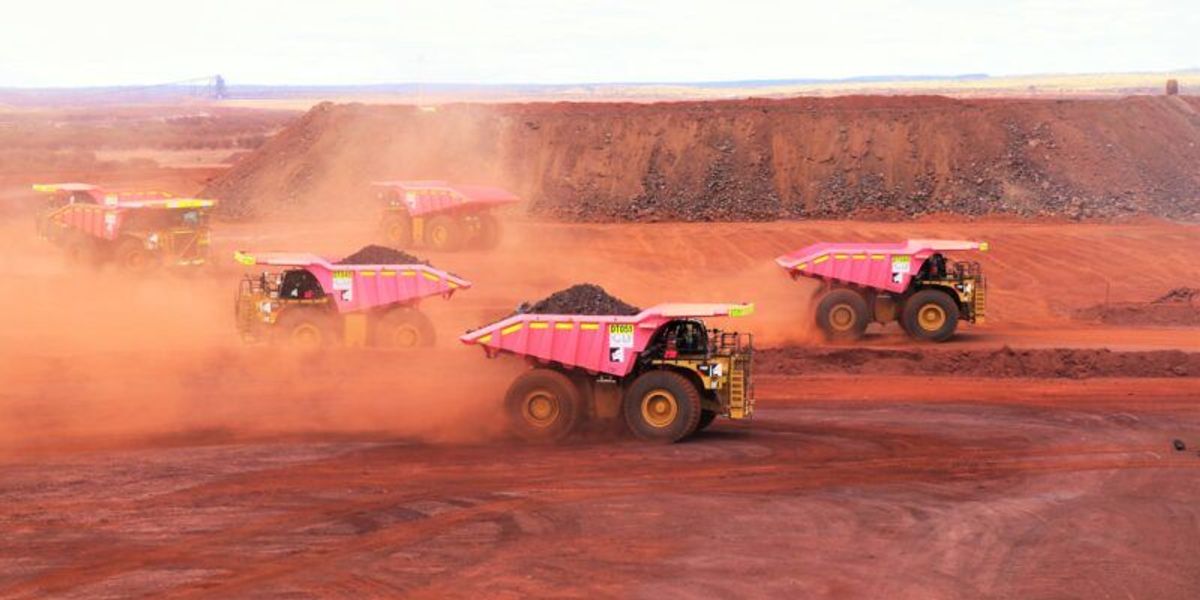
Vehicles hauling ore at Roy Hill iron ore mine.
Photo of Roy Hill iron ore mine via Roy Hill.
Hancock Prospecting’s Roy Hill and Hope Downs iron ore mines are in Western Australia's resource-rich Pilbara region.
Roy Hill has attracted strategic partnerships with major global enterprises: Marubeni (TSE:8002) has a 15 percent equity stake, POSCO Holdings (NYSE:PKX,KRX:005490) has a 12.5 percent stake and China Steel (TPE:2002) has a 2.5 percent stake. The minority partners purchase a combined 28.75 million tonnes of iron ore annually from Roy Hill’s production.
In September 2024, Hancock Prospecting got the green light for its AU$600 million McPhee iron mine located about 100 kilometres north of the Roy Hill mine after a long approval process.
The McPhee iron mine is expected to produce around 10 million tonnes of the metal each year over an estimated 15 year mine life. First production is expected to kick off next year, and ore will be transported by road trains to Roy Hill for processing and blending. The goal is to improve the larger mine's product mix and sustain its production volumes.
The Hope Downs iron ore complex is another of Australia’s largest iron ore projects. A 50/50 joint venture partnership with Rio Tinto (ASX:RIO,NYSE:RIO,LSE:RIO), Hope Downs hosts four open-pit mines and has an annual production capacity of 47 million tonnes. Hope Downs has also been the subject of a more than decade-long civil dispute in a Western Australian court over royalties, put forth by the descendants of Lang Hancock's business partner Peter Wright as well as Rinehart’s own children.
In June 2025, the partners announced a combined investment of US$1.6 billion to develop the Hope Downs 2 iron ore project, a part of the main JV. The project hosts the Hope Downs 2 and Bedded Hilltop deposits, which together will have a total annual production capacity of 31 million tonnes.
Gina Rinehart’s iron ore investments
Gina Rinehart’s iron ore investments in Western Australia extend beyond Roy Hill and Hill Downs to Atlas Iron’s three producing mines and a pipeline of development projects.
Rinehart’s Hancock Prospecting acquired Atlas Iron in 2018 through a AU$427 million deal that turned out to be dirt cheap as the company would go on to deliver AU$1.5 billion in revenues over the next three years alone.
Today, Atlas Mines operates the Mount Webber, Sanjiv Ridge and Miralga Creek mines. Production from these mines in its fiscal year ended June 2023 led to a AU$222 million dividend payment for Rinehart’s Hancock Prospecting.
As of July 1, 2025, Hancock Prospecting has consolidated its Roy Hill and Atlas Iron under the new name Hancock Iron Ore. The new entity represents combined iron ore exports of about 74 million tonnes per year.
Additionally, Hancock has an earn-in agreement on Legacy Iron Ore (ASX:LCY) and Hawthorn Resources’ (ASX:HAW) Mount Bevan project through its subsidiary Hancock Magnetite Holdings.
At Mount Bevan, as part of its earn-in agreement, Hancock completed a prefeasibility study (PFS) for a 12 million tonne per year high-grade magnetite project in July 2024. The PFS incorporates a resource estimate totalling 1,291 million tonnes, which was completed by Atlas, and delineates a capital cost of AU$5 billion to develop Mount Bevan.
Completion of the PFS increased Hancock’s stake in the joint venture from 30 percent to 51 percent, with Legacy now holding 29.4 percent and Hawthorn holding 19.6 percent.
Like iron, coal is another essential material in steel manufacturing. To this end, Rinehart is also pursuing an investment in a past-producing metallurgical coal mine in Alberta, Canada. Hancock Prospecting subsidiary Northback Holdings is the owner of the proposed Grassy Mountain steelmaking coal project in the province’s Crowsnest Pass region.
Exploration licences for the Northback project were greenlit by Alberta regulators in May 2025.
Gina Rinehart’s lithium investments
Gina Rinehart's lithium investments include Azure Minerals’ (ASX:AZS) Andover lithium project, Liontown Resources, Delta Lithium (ASX:DLI) and Vulcan Energy Resources (ASX:VUL).
The majority of her lithium investments came in a flurry in 2023 and 2024.
In June 2023, Rinehart’s Hancock Prospecting signed a separate joint venture earn-in agreement for the Mount Bevan magnetite project discussed above, this time for the lithium, nickel and copper mineralization at the project. The agreement will similarly see Hancock able to earn a 51 percent interest by completing certain milestones.
In September 2023, Rinehart made headlines when she took a position in Liontown Resources and then rapidly increased the position to 19.9 percent over the following month. This allowed Hancock, which was now Liontown's largest shareholder, to effectively block Albemarle’s (NYSE:ALB) accepted takeover of the smaller lithium company.
However, Liontown took a hit as the economics for its near-production Kathleen Valley lithium project in Western Australia were affected by high inflation and low lithium prices. In January 2024, Albemarle decided to sell off its 4 percent stake in Liontown. The lack of any further moves or comment by Rinehart in relation to Liontown Resources has led to speculation she may be waiting for the right opportunity to buy up the lithium company at a discount.
Kathleen Valley entered open-pit production in late July 2024, and is expected to produce approximately 500,000 tonnes per year of spodumene concentrate per year. In April of this year, the operation became Australia's first underground lithium mine when it commenced production from its Mount Mann deposit. Liontown plans to fully transition production to the underground mine in its fiscal 2026.
Albemarle's Liontown acquistion wasn't the only lithium bid Rinehart blocked in October 2023. As is her strategy, Rinehart scooped up an 18.9 percent stake in Azure Minerals after SQM announced its intention for a total takeover of the company and its Andover lithium project in the West Pilbara region of Western Australia.
This story had a different ending, though, as Hancock Prospecting instead joined the lithium giant in a AU$1.7 billion deal to become a co-owner of the exploration-stage Andover project. The deal closed in May 2024.
Shortly after its Liontown and Azure moves, Hancock Prospecting continued investing in Western Australia's lithium prospects when it participated in a AU$70.2 million fundraising for Delta Lithium in November 2023. The proceeds will help Delta Lithium to fund the development of its Mount Ida lithium-gold project, which is adjacent to Hancock's Mount Bevan joint venture project. As of November 2024, Hancock Prospecting owns 10.65 percent of Delta Lithium.
Rinehart has made lithium investments outside of Australia as well. Looking further afield to Germany, with a 7.5 percent stake, Hancock Prospecting is the second largest shareholder in Vulcan Energy and its flagship Zero Carbon lithium project in Germany’s Upper Rhine Valley, a milestone Rinehart's company reached after investing an additional AU$20 million in Vulcan, which made headlines in June 2024. The Zero Carbon project is slated to produce an initial 24,000 tonnes of lithium hydroxide by the end of 2025, targeting Europe’s electric vehicle manufacturing sector.
In November 2024, Vulcan Energy reached another major milestone with first production at its downstream lithium hydroxide optimisation plant, which is designed to produce lithium hydroxide and battery-grade lithium hydroxide monohydrate.
In May 2025, Vulcan commenced drilling on its first new geothermal energy-lithium well in Landau, Germany, as part of its Phase 1 Lionheart project. The site currently holds four production and re-injection wells and the company aims to add 24 more that will produce hot lithium brine. Vulcan plans to use the new production to increase its geothermal energy production and begin commercial lithium production. In July, Vulcan received US$122 million from the German government to advance its project.
Gina Rinehart’s rare earth metals investments
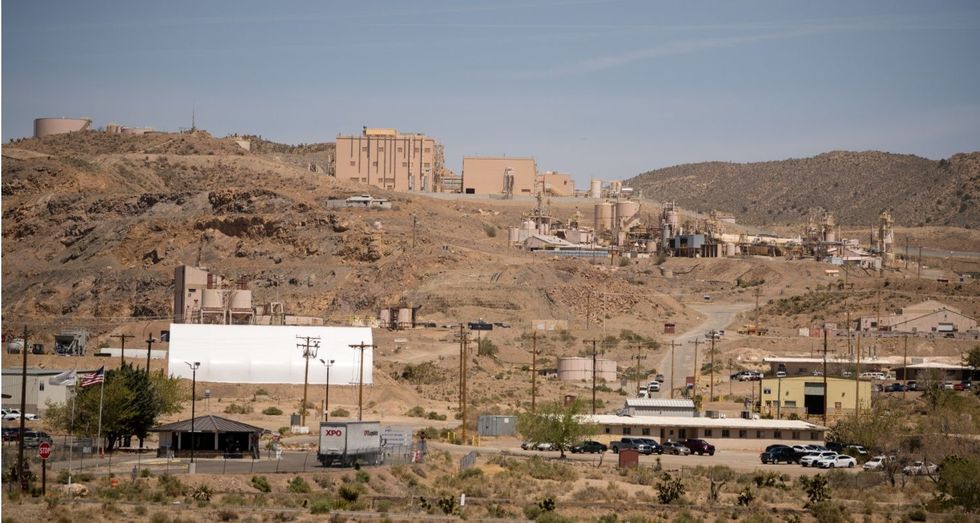
Facilities at MP Materials' Mountain Pass rare earths mine.
clayton harrison / Shutterstock
Through Hancock Prospecting, Gina Rinehart has made investments in some of the world’s most well known rare earth mineral producing companies — US-based MP Materials and Australia’s Lynas Rare Earths — as well as development-stage Arafura Rare Earths and exploration-stage Brazilian Rare Earths (ASX:BRE). Rinehart taking a position in these rare earths companies shows she is looking to capitalise on the significant need for these critical metals outside of China.
As mentioned in the introduction to this article, Rinehart’s Hancock Prospecting is the largest shareholder of Arafura Rare Earths, giving it a 10 percent stake in the advanced-stage, construction ready Nolans project in the Northern Territory, Australia. Rinehart made the investment in December 2022. As of August 20, 2025, Arafura is conducting an AU$80 million tranche 1 financing underway, reporting support from Hancock Prospecting of a currently undisclosed amount.
In April 2024, Rinehart made two significant moves into the sector. The first came on April 9, when it was revealed that Hancock Prospecting had acquired a 5.3 percent stake in MP Materials, the second largest rare earths producer outside of China. The company’s California-based Mountain Pass mine is the only integrated rare earth mining and processing operation in North America.
Rinehart’s investment in MP Materials could later bring in “Roy Hill-type cash flow,” Dylan Kelly, head analyst at Terra Capital, told Australian Financial Review. “Anything that is producing and not China-aligned is highly strategic. These materials are very, very hard to make and there’s a lot of demand in making magnets for electric vehicles and wind turbines."
One week later, Rinehart’s Hancock Prospecting took up a 5.82 percent interest in Lynas Rare Earths, the largest ex-China rare earths producer. The Australian rare earth miner produces the critical metals at its Mount Weld mine in Western Australia and ships the raw material to Malaysia for processing. Lynas is also ramping up processing at its Kalgoorlie rare earth facility in Australia, and building light rare earths processing facilities and a heavy rare earths separation facility in Texas, US.
Rinehart’s near simultaneous investments in Lynas and MP Materials came after merger talks between the two rare earths behemoths stalled in February 2024. In November 2024, the mining mogul increased her position in MP Materials to 8.5 percent. As for Lynas, she raised her stake to 7.14 percent in July 2024 and then 8.21 percent in January 2025.
In July 2025, the US Department of Defense announced it was taking a stake in MP Materials worth US$400 million in preferred stock and guaranteed a floor price of US$110 per kilogram for neodymium and praseodymium from MP Materials, representing nearly double that of China’s rates as the Trump administration seeks to build the nation's domestic rare earth industry.
The news of the DoD's investment significantly elevated both MP Materials' and Lynas' share prices, with Forbes reporting that the value of Rinehart's holdings in the two companies increased by about US$200 million and US$100 million respectively.
There was previously speculation stirring that Rinehart’s participation in MP and Lynas could renew merger discussions, Reuters reported, and Rinehart's increased positions further raised the possibility of a merger down the road. However, the US Government's major shareholder position in MP Materials makes such an acquisition a long shot.
Rinehart is also getting her foot in the rare earths door at the exploration level. In 2023, Rinehart’s Hancock Prospecting made a pre-IPO investment for a 5.85 percent share in Brazilian Rare Earths, which went on to list on the ASX in December of that year. The rare earth explorer is working its district-scale Rocha da Rocha rare earth asset in the state of Bahia, Brazil. The province is highly prospective for both heavy and light rare earths, with grades of over 40 percent total rare earth oxides found. Brazilian Rare Earths is working to complete an updated JORC mineral resource estimate.
Gina Rinehart’s copper investments
Gina Rinehart’s copper investments are centered on Ecuador’s Andean copper-gold belt, and include explorer Titan Minerals and Ecuador's state-owned Empresa Nacional Minera (ENAMI).
Ecuador has seen a rush of major mining companies taking up positions in key copper and gold projects in recent years, placing Hancock Prospecting in the company of Barrick Mining (TSX:ABX,NYSE:B), Zijin Mining (HKEX:2899) and Anglo American (LSE:AAL,OTCQX:AAUKF).
Rinehart’s Ecuadorian copper investments are in line with her shift toward the critical metals necessary for the green transition and her strategy to expand the global footprint of her mining empire.
Hancock Prospecting subsidiary Hanrine Ecuadorian Exploration and Mining has been in the region since 2017, and has continued to make more investments. In March 2024, Hancock Prospecting subsidiary Hanrine Ecuadorian Exploration and Mining acquired a 49 percent stake in six mining concessions for AU$186.4 million. The deal sees it partner with state mining company ENAMI for the concessions, which surround the stalled Llurimagua copper-molybdenum project in Northern Ecuador.
In late April 2024, Ecuador’s constitutional court nixed appeals by ENAMI and its partner in the Llurimagua project, Chile’s state-owned CODELCO, to review the March 2023 decision by Imbabura’s provincial supreme court suspending the environmental licence for Llurimagua.
Shortly after the investment with ENAMI, Rinehart's Hanrine made another play in Ecuador by striking an earn-in agreement with Titan Minerals for up to an 80 percent ownership stake in the explorer’s Linderos copper-gold project contingent on up to AU$120 million in exploration spending. Linderos is an early-exploration stage project with the potential to host a large-scale copper porphyry system. Hanrine has made an initial investment of AU$2 million for a 5 percent stake.
Gina Rinehart’s oil and gas investments
Gina Rinehart’s oil and gas investments include private firms Warrego Energy in Western Australia and Senex Energy in Queensland.
In February 2023, Hancock Prospecting won a protracted bidding war for the then-public Warrego with Warrego's joint venture partner Strike Energy (ASX:STX) at a price of AU$0.36 per share. Warrego and operator Strike Energy maintain their 50/50 joint venture on the West Erregulla onshore gas field within exploration permit EP 469 near Perth in Western Australia.
In mid-August 2024, the West Erregulla project received its production licence. During Phase 1, the project is expected to produce 87 terajoules per day.
As for Senex Energy, it is a joint venture between POSCO (50.1 percent) and Hancock Prospecting subsidiary Hancock Energy (49.9 percent) that holds the Atlas and Roma North natural gas developments in Queensland’s Surat Basin. The two JV partners acquired Senex in 2022, with Rinehart’s company putting up AU$440.89 million.
Senex Energy has embarked on a AU$1 billion expansion endeavor at Atlas and Roma North that will see 60 petajoules of natural gas delivered to Australia’s east coast market annually by the end of 2025. This figure represents more than 10 percent of the region’s demand. Regulatory approval for the expansion was finally received following an uphill battle with a Federal government more interested in renewable energy projects than the natural gas variety. Hancock Prospecting reported the first flows of gas production from the expansion field in late November 2024.
Rinehart once had a significant stake of nearly 20 percent in Lakes Oil, now Lakes Blue Energy (ASX:LKO), through subsidiary Timeview Enterprises. Timeview's stake in Lakes Blue Energy has been lowered in recent years, but it remains the company's fourth largest shareholder at 4.075 percent.
In late October 2024, Rinehart offered financial assistance to Mineral Resources (ASX:MIN,OTC Pink:MALRF), a diversified mining company with lithium, iron ore and oil and gas operations in Western Australia. Headed by another mining heavyweight, Chris Ellison, Mineral Resources (MinRes) is reportedly drowning in debt and embroiled in a tax evasion investigation. At that time, Hancock Prospecting agreed to a AU$1.13 billion buyout of MinRes' oil and gas projects in the Perth Basin and an exploration acreage in the Carnarvon Basin.
The 100 percent sale of two of MinRes' exploration permits to Hancock was completed in December 2024 for initial consideration of AU$780 million, with potential for up to AU$327 million depending on whether certain conditions and thresholds are met. The permits include the Moriarty Deep prospect and the Lockyer gas and Erregulla oil discoveries.
Separate to that sale, the two companies are also forming two 50/50 exploration joint ventures for MinRes' remaining permits in the Perth and Carnarvon Basins. Hancock will acquire 50 percent of the MinRes Explorer drill rig, which is the largest in Australia.
Gina Rinehart’s potash and agriculture investments
Gina Rinehart’s potash and agricultural investments center on Hancock Prospecting’s ownership interests in multiple premium cattle stations in Australia, and the company's royalty revenue generated from the Anglo-American-controlled Woodsmith potash project currently under construction in the United Kingdom.
With an original investment of AU$380.6 million in 2016 to then-owner Sirius Minerals, Hancock Prospecting has a 5 percent revenue royalty on the first 13 million tonnes of fertiliser produced from Woodsmith and 1 percent thereafter. Hancock also has a 20,000 tonne per year offtake option. The timeline for Rinehart’s royalty revenue has been pushed back, however, as Anglo is cutting spending at Woodsmith following BHP’s (ASX:BHP,NYSE:BHP,LSE:BHP) failed mega-merger with Anglo American.
Investor takeaway
With Gina Rinehart at the helm of Hancock Prospecting, the Roy Hill iron ore mine has generated stellar revenues.
That wealth creation not only made her Australia's richest person, but has also built a powerful war chest from which Rinehart is expanding her mining empire.
Investors can take cues from her recent and future moves in the mining sector. Although she may be defensive toward renewable energy technologies encroaching on agricultural land, she understands the strategical importance of investing in critical metals for the green transition such as lithium, rare earths and copper.
FAQs for Gina Rinehart
How much is Gina Rinehart worth?
Gina Rinehart's net worth is reported to be AU$38.11 billion, maintaining her spot as the richest Australian, according to figures from the Australian Financial Review's Rich List 2025. However, her total wealth is down 6 percent over the previous year.
"Iron ore magnate Rinehart has topped the Rich List for the sixth year in a row, but the falling iron ore price has hit the valuation of her Hancock Prospecting, wiping around $2b off her estimated net worth," the list's authors explain.
What company does Gina Rinehart own?
Gina Rinehart owns Hancock Prospecting, a private company founded by her late father Lang Hancock. Originally an iron ore mining company, today the firm has strategic stakes in a wide-range of metals and commodities from lithium and rare earths to copper and agriculture, which are detailed in this article.
Can I buy shares in Hancock Prospecting?
While investors can't buy public shares in privately held Hancock Prospecting, they can take equity positions in the publicly traded stocks in which the company itself holds interest. Some of these stocks include Arafura Rare Earths (ASX:ARU,OTC Pink:ARAFF), Liontown Resources (ASX:LTR,OTC Pink:LINRF), MP Materials (NYSE:MP) and Lynas Rare Earths (ASX:LYC).
Does Gina Rinehart own Rio Tinto?
Although she has interest in many mining companies and the two companies share the Hope Downs joint venture, Gina Rinehart does not own mining giant Rio Tinto. Market Screener reports that Aluminum Corporation of China (SHA:601600) is its largest shareholder at 14.5 percent, followed by BlackRock (NYSE:BLK) and others at around 3 percent and below.
What does Gina Rinehart think about nuclear energy?
Gina Rinehart is pro-nuclear energy. During a speech at The Australian Bush Summit in 2023, she railed against the impact of wind and solar farms on much needed agricultural land in Australia. She suggested that nuclear energy offers a more viable solution for reaching the country's net zero targets.
Is Gina Rinehart the richest person in Australia?
Gina Rinehart is the richest person in Australia with a net worth of AU$38.11 billion. In 2025, she topped the Australian Financial Review's Rich List for the sixth consecutive year in a row. The next richest Australian, real estate developer Harry Triguboff, trails her at AU$29.65 billion.
Is Gina Rinehart the richest woman in the world?
Gina Rinehart is not the richest woman in the world. While she did rank as the world's ninth richest woman in 2024, as of March 2025, she is no longer in the top ten. The distinction of richest woman in the world goes to Walmart (NYSE:WMT) heiress Alice Walton. Rinehart previously held the title in 2012.
This is an updated version of an article first published by the Investing News Network in 2024.
Don't forget to follow us @INN_Australia for real-time news updates!
Securities Disclosure: I, Melissa Pistilli, hold no direct investment interest in any company mentioned in this article.
Keep reading...Show less
28 August
Billionaire-backed KoBold Metals Secures DRC Licenses in Push for Manono Lithium
KoBold Metals, a US-backed mining firm supported by billionaires Jeff Bezos and Bill Gates, has received seven new permits to explore for lithium in the Democratic Republic of Congo (DRC).
The DRC mining registry confirmed on Wednesday (August 27) that the permits cover ground in both the Tanganyika and Haut-Lomami provinces, including four in Manono territory, home to the massive Roche Dure lithium deposit.
The approvals follow a July agreement between KoBold and the DRC government that positioned the company to acquire and develop the disputed Manono project, considered one of world's largest untapped lithium deposits.
“Our exploration efforts across all seven new licenses will be focused on lithium,” a KoBold official told Reuters. The permits also authorize searches for coltan, rare earths and other minerals across more than a dozen prospective sites.
For the DRC, the deal with KoBold furthers its strategy to attract western capital and technology to its critical minerals sector, reducing reliance on Chinese firms that dominate much of the country’s cobalt and copper production.
President Félix Tshisekedi publicly endorsed the agreement in July, framing it as a cornerstone of the DRC's ambitions to strengthen its role in global electric vehicle supply chains.
Betting on AI-driven exploration
Founded in 2018 and backed by Breakthrough Energy Ventures, KoBold counts Bezos, Gates and venture firm Andreessen Horowitz among its investors. The company touts its use of artificial intelligence (AI) and advanced computing technology to accelerate the search for copper, cobalt, nickel and lithium.
Under its July framework with Kinshasa, California-based KoBold committed to launching a large-scale exploration program across more than 1,600 square kilometers by mid-2025. The agreement also obliges the DRC to appoint a special envoy to facilitate KoBold’s pursuit of the Manono acquisition.
In addition to field exploration, the company has pledged to digitize geological records housed at Belgium’s Royal Museum of Central Africa and make them publicly accessible through the DRC's National Geological Service.
Legal clouds over Manono
Despite KoBold's focus on Manono, the asset is mired in a protracted legal battle.
AVZ Minerals (ASX:AVZ), through its local joint venture Dathcom Mining, argues that it remains the rightful permit holder and has taken its case to the International Center for Settlement of Investment Disputes.
Last year, the tribunal issued interim measures ordering the DRC to recognize AVZ’s rights pending a final ruling.
AVZ said the KoBold agreement, which covers parts of the same perimeter, breaches those orders.
In a July 21 statement, the company stressed that it “remains open to constructive dialogue,” but insisted that any outcome must respect its legal rights and existing relationships.
Don’t forget to follow us @INN_Resource for real-time news updates!
Securities Disclosure: I, Giann Liguid, hold no direct investment interest in any company mentioned in this article.
Keep reading...Show less
Latest News
Latest Press Releases
Related News
TOP STOCKS
American Battery4.030.24
Aion Therapeutic0.10-0.01
Cybin Corp2.140.00
